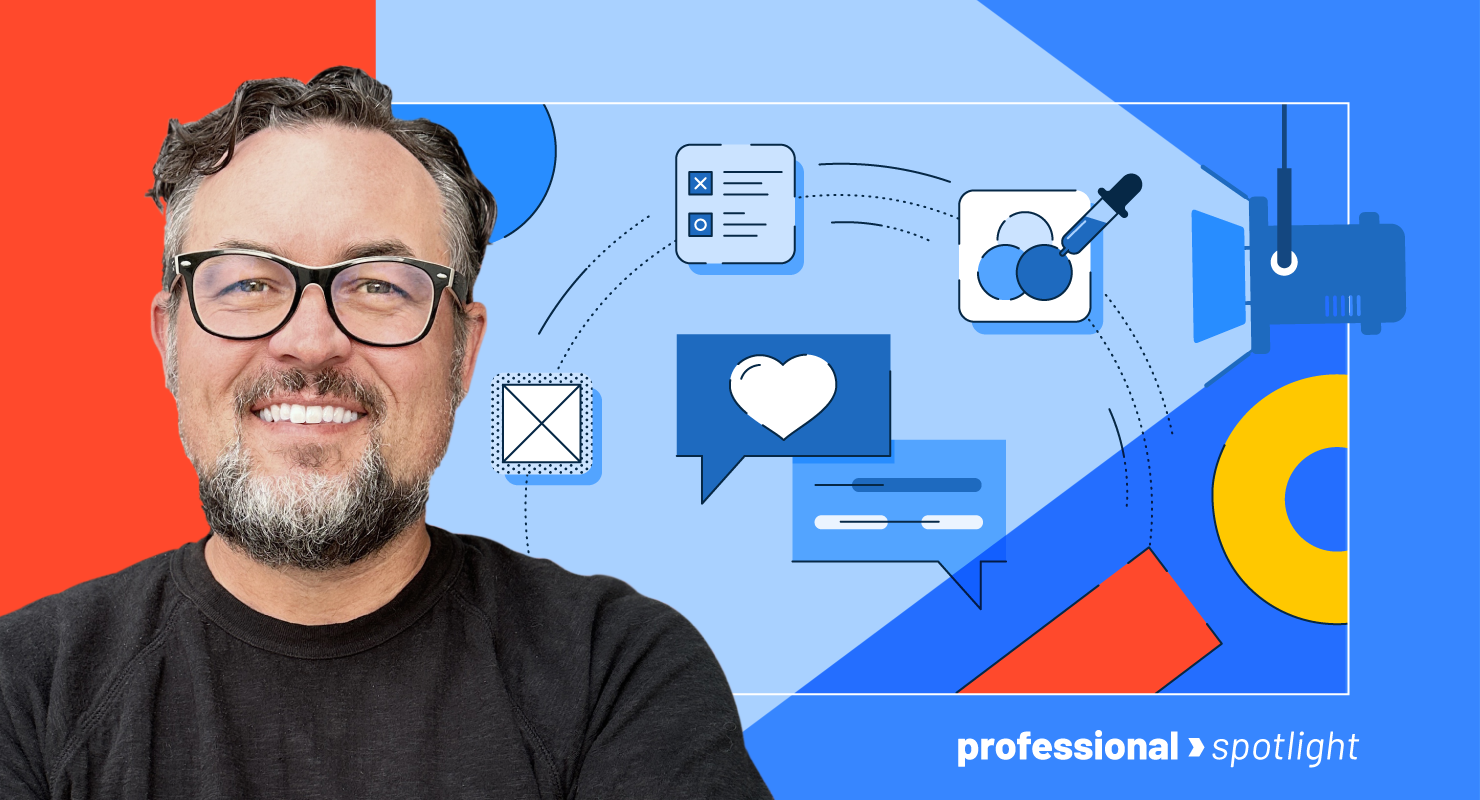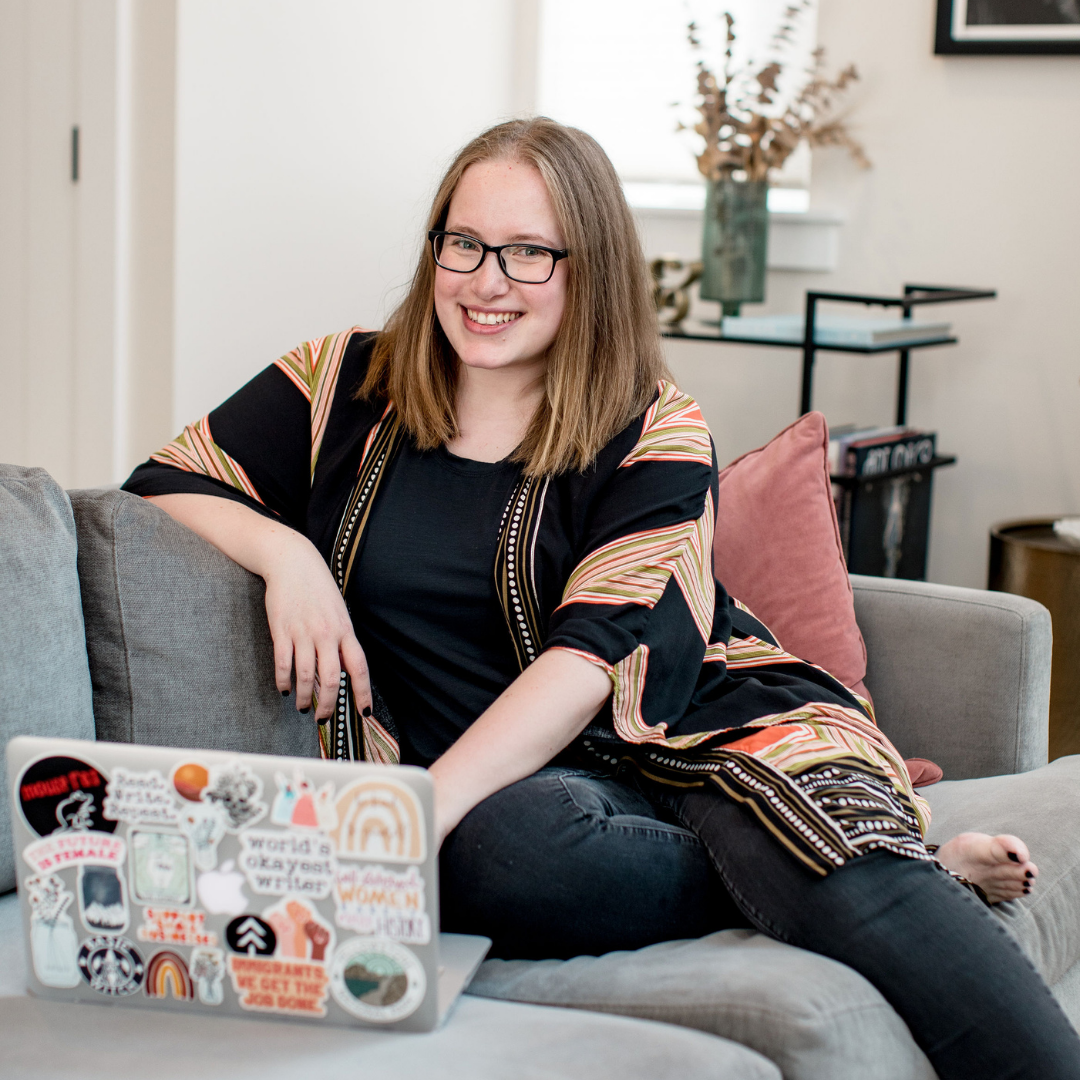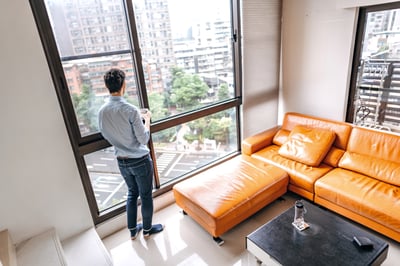January 31, 2024
.png?width=400&height=150&name=My%20project-1%20(1).png) by Tanuja Bahirat / January 31, 2024
by Tanuja Bahirat / January 31, 2024

Design goes beyond aesthetics. In a world where the intersection of technology, innovation, and human experience shapes the landscape of our daily interactions, design emerges as the silent orchestrator. It is the thoughtful fusion of art and functionality.
Design considers user needs. It’s part of the gadgets we love. The media we consume. It is the compass guiding us through the complexities of the modern world.
I had the privilege of talking to G2’s own VP of Product Experience Design, Dane Howard. A builder of design and innovation teams and coach to executives, designers, and product leaders for over 20 years, Dane shares with us his journey to becoming a design leader.
This interview is part of G2’s Professional Spotlight series. For more content like this, subscribe to G2 Tea, a newsletter with SaaS-y news and entertainment.
What's your favorite beverage? Tea. Peppermint or Egyptian licorice.
When do you enjoy it in relation to work? Late morning, early afternoon.
What was your first job? Room service.
What problems at work make you want to throw your laptop out the window?
We take “connection” for granted. “Always on” internet and fast speeds. When that is interrupted, it’s humbling.
Tanuja Bahirat: Hi, Dane! Thanks for taking the time to talk with me today. You have an impressive résumé with a lot of big-name companies on it. Can you give me an overview of your professional journey and how you ended up here at G2?
Dane Howard: I get a lot of comments about my varied background, and I take that as a badge of honor. Big and small companies; startups and end-ups. And I’ve also co-founded two companies, one of which was right out of school. Since early on, I’ve had this entrepreneurial spirit to build value and customer experiences. The power of value creation, together. I’m fortunate to have grown from an individual contributor to design management and, ultimately, design leadership.
Journeyline to G2
What are some key milestones that helped shape your career and push you toward design leadership?
A couple of things stick out to me. One was a very influential job, which was working for the Olympics. I led a team of about 30 people for the summer 2000 games right when the internet started to become relevant. Imagine you’re watching the Olympics on TV, and they would say, “For more information, go to NBColympics.com!” We were one of the first Olympics that really started to happen.
The honor to work at such a global scale – and this was when I knew what the deadline was! You had to be ready. Because whether you were ready or not, the Olympics were gonna come. That was one of the really important seasons of my life. I had to become a good people manager and learn to work under stress.
The second is that I co-founded a company that we sold to eBay. At a time when mobile and e-commerce were coming together - that’s when I really grew up. I was initially an individual contributor (IC), but was then asked to manage others. And during my time there – which was about seven years - I understood what it meant to serve a global audience. We had localization, had projects in France and Germany, and I had to launch a business and scale across iOS and Android.
The CEO at the time asked me to invest in what it would look like to amplify design. I had never done anything like that then, and it didn’t happen overnight. However, I learned about marketplace dynamics connecting buyers and sellers, worked on global projects, and worked with different cultures.
Such an inspiring journey! I’m curious to know more about your philosophy about the role of design.
Design has become more of a measured practice. It's less about what things look like and more about the function - how they work. But I also recognize that design is a loaded word.
When you use the word design, it means different things to different people. To be effective in an organization, a tech company, or even a G2, you have to present the craft in a way that is usable and functional. You have to think empathetically and walk in your customers’ shoes.
I would say that I ended up reframing the function of design to be a lot more customer-centric. You have to recognize that the craft itself is different – what we create is visual – there is a lot of importance around the culture of making, allowing designers to make their craft. Don't lead with the function of design, but lead with the user and customer language.
Another way to look at it is as a three-legged stool. If you look at a balanced stool, one leg might be engineering, one might be business/product management, and one might be design or user experience. You put the customer at the center of that stool, and they will feel the balance. This has usually been a good way for me to think of design as an input to the customer.
That’s an interesting example and a great way to look at design and user experience. How do you think design helps shape people’s experiences?
It's a blessing and a curse going through your entire life knowing design because it's always in front of you. One way to think of design is through friction. Design always helps reduce friction. Whether it's getting you through an airport faster or feeling a certain way about a hotel stay, it always helps reduce friction. When you're obliged to tell another person how awesome a certain product/service is, that's the highest regard for design.
I see friction everywhere.
Design is a career of service. You always have to be empathetic. You have to imagine what your work does in the context of someone else using it. You have to think of it holistically.
When you're watching a great movie, you're really immersed in it, you’re not really thinking, "Oh, that's a really good soundtrack."
When great design happens, it's not jumping on you saying, "I'm a really good design!" You're not thinking about it. It's so beautifully woven into the fabric of what you're experiencing.
How do you focus on scaling the design process across multiple business domains to ensure a cohesive product?
My journey to scaling products has taken several years. Creating things is different from scaling them or making them repetitive. Sometimes, we call them “mechanisms.” They’re like process machines that need to be able to run when you aren’t there. They have to be well-documented, witnessed, and repeatable by many.
An example might be how you run a design review, build an agenda, or create a cadence of presenting annually for an organization.
There is very little “institutional memory” in an organization. New people are coming and going. Scaling a good (or bad) process can fizzle out.
You spoke about conducting design reviews. What’s something you look for while doing the same?
When work is shared, it’s always shared in the context of a design process. It’s most useful if the designer shares where they are in the process and what kind of feedback they’re looking for.
They are the subject matter experts; they have been working deeply on the product, they know their customers, they know their customer friction and pain points, and they’ve been given a problem to solve. So it’s always great when we give that story the opportunity to reveal itself. It helps everyone in the room understand where you are in the process.
There are some rules around giving feedback. To those of us who’ve been to design school, it’s about how you generally articulate feedback in a way that’s helpful or useful. This might include what you explored, what you eliminated, and what you considered. It might offer opportunities to look at the problem in new ways. Oftentimes, an individual under a deadline might work in a way that introduces bias. Design review lets us see the problem with a fresh perspective.
“We're always critiquing work and not the person. We have to really amplify the PEAK value of kindness but in the spirit of authenticity and performance.”
Dane Howard
VP, Product Experience Design at G2
I’ll shift gears here and talk about AI. How has AI impacted design, and what challenges do you anticipate in the future?
In 2022-23, AI really started picking up, and I had to think about how it would affect workflows. It is a helpful tool that never complains, works 24/7, and can be taught to do anything, so what would you teach it?
I run a collaborative design studio called the Dane Howard Studio, which specializes in design and fine art for commercial and residential projects across multiple disciplines, such as fashion, sports, generative AI, and more. One of the most recent AI projects I worked on was the Implausible Creatures, rare and extraordinary creatures of the world that you haven’t met yet.
When you use AI ethically, you have new superpowers. I’m old enough to know that Photoshop doesn’t always have layers. If we’re talking about a time when users had layers, you could turn on layers, turn them off, and check your iterations.
And I think that’s the hallmark of how AI will help design. It’ll help remove some of the tedious work. If you can remove tedious work, you can make more iterations. If you can make more iterations, your creative confidence goes up. If you think of AI in that sense, it helps reduce tedious work and boost creative confidence.
I saw on your LinkedIn you said, “I believe that stories build in strength with re-telling. It is the product and brand stories that become the reason we all move forward together.” How does design force you to become a better storyteller?
Love the question. Our brains are wired for stories. It’s one of the things that emotionally connects us when we hear a story.
If you’re gonna design a feature or a product, it never sits alone. It comes with the context of what came before it, what moment you are having now, and the future.
Using storytelling in an organization helps everyone get excited about what we can build together. Design is usually the front-end of the process; although it is highly collaborative, it helps hold the story together.
As a leader, you use repetition of a story to allow others to hear it and then re-tell it. It amplifies the opportunity because it creates a resonance in the unifying process. Building software is an act of will. Like an orchestra, all instruments playing together, working on the same song sheet.
Stories have a way to align all those instruments in a way that the sound can be a bigger sound.
What’s something about design that others often misunderstand or get wrong?
If I go back to the example of the three-legged stool, design should be highly collaborative. It is a loaded word.
Design is in service of someone else. “Hey, can you get this to me by Friday?” That puts design into a reactive posture.
But at the core of design, it is problem solving. How often is design used to solve the wrong problem? A big misinterpretation would be to think of design as only a service or [dis]service or a particular problem someone else has defined.
Whereas in hindsight, you want to use design to get ahead of the problem, find the problem, agree on the problem, and use it to proactively solve the problem so that the artifacts of design – the prototypes – the confidence of what should be built rises.
“It's less about outsourcing design as a requirement, but more about leaning into the proactive opportunities of what to build together.”
Dane Howard
VP, Product Experience Design at G2
This has been incredibly insightful, Dane. I would love to close with some takeaways for our readers. What design trends do you foresee? Do you have any parting words or advice to give to design leaders?
Trends come and go. That's the definition of a trend. My guidance around a trend that will serve people better is to put that into context. Let’s take VR as an example. Let’s say you put on a VR headset for a long time or think about wearing one in public. The use case exponentially reduces.
Technology can be attractive, but cannot sit by itself. A lot of it sits in application. A lot of design trends can last only because society is willing to accept them.
As for parting words to design leaders, I have two things to say.
If I can invite designers and design leaders to think about something that they will invest time and energy in for their entire career.
Listen more. Talk less.
So much of the design world is about taking in information and being very precise about your communication in giving direction. And those two points have really served me well.
Follow Dane Howard on LinkedIn to learn more about Design Leadership, Communication, Coaching & Mentoring.
Tanuja Bahirat is a content marketing specialist at G2. She has over three years of work experience in the content marketing space and has previously worked with the ed-tech sector. She specializes in the IT security persona, writing on topics such as DDoS protection, DNS security, and IoT security solutions to provide meaningful information to readers. Outside work, she can be found cafe hopping or watching football. Connect with her on LinkedIn.
This is the second of five articles that make up The Newcomer’s Guide to Category Design.
 by John Rougeux
by John Rougeux
Before fonts, filters, or Figma, there were cave walls. From charcoal sketches deep in...
 by Holly Landis
by Holly Landis
This is the third of five articles that make up The Newcomer’s Guide to Category Design.
 by John Rougeux
by John Rougeux
This is the second of five articles that make up The Newcomer’s Guide to Category Design.
 by John Rougeux
by John Rougeux
Before fonts, filters, or Figma, there were cave walls. From charcoal sketches deep in...
 by Holly Landis
by Holly Landis


